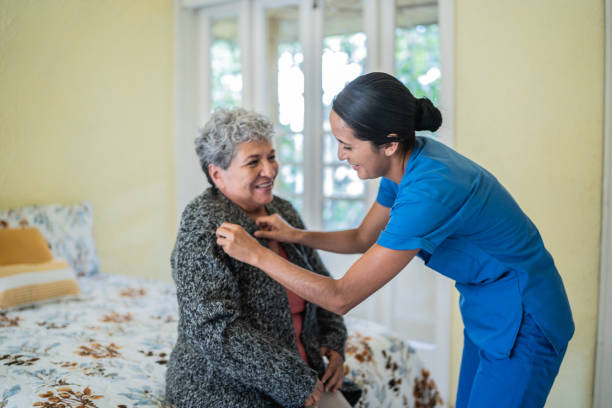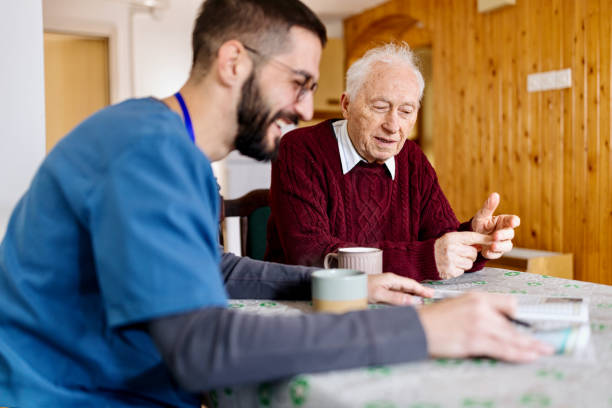Assisted living communities offer an ideal blend of independence and support for seniors who may require some assistance with daily activities but wish to maintain an active and fulfilling lifestyle. These communities are designed to provide a safe, nurturing environment where residents can thrive socially, mentally, and physically, ensuring peace of mind for both the residents and their families.
Contents
A Typical Day in an Assisted Living Community
Morning Routines
Mornings in an assisted living community often begin with a healthy breakfast served in a communal dining area. This not only offers nutritious meal options but also fosters a sense of community as residents interact and share their morning together. Staff are attentive to individual dietary needs and preferences, ensuring every resident starts their day well-nourished.
After breakfast, many residents choose to engage in various morning activities. These can include gentle exercise classes like yoga or tai chi, which are perfect for improving flexibility, balance, and overall health. Alternatively, some residents may opt for a relaxing stroll around the landscaped gardens or participate in a craft session, allowing them to express their creativity.
Midday Activities
Lunch serves as another opportunity for residents to gather and enjoy a freshly prepared meal. Meals are often planned with input from nutritionists to ensure they meet the health requirements of the older demographic, offering balanced and enjoyable options.
The afternoon is filled with an array of activities catering to diverse interests. Residents might participate in educational workshops, book clubs, or language classes, all designed to stimulate the mind and maintain cognitive functions. Those with artistic inclinations may spend time in the art studio, while others may prefer to relax in the library with a good book. Assisted living communities typically provide numerous options, ensuring there’s something for everyone.
Evening Relaxation
Dinner is a cornerstone of the day, presenting another chance for socialization and fine dining. Menus are designed to offer variety and cater to the tastes of the residents. Post-dinner activities often include movie nights, musical performances, or guest lectures from experts on various topics. These events foster community engagement and provide entertainment that enriches the residents’ lives.
As the evening winds down, residents might participate in less stimulating activities such as meditation sessions or simply enjoy quiet time in their apartments. Staff are available around the clock to assist residents with any needs, ensuring a secure and comfortable night.
The Role of Staff in Enhancing Daily Life

Personalized Care and Support
One of the critical aspects of life in an assisted living community is the personalized care each resident receives. Trained professionals are dedicated to assisting with daily tasks such as bathing, dressing, and medication management, ensuring residents maintain their dignity and independence. The staff works closely with residents and their families to create individualized care plans that address specific needs and preferences.
Social and Recreational Facilitators
Staff members also play a pivotal role in organizing and facilitating social and recreational activities. By doing so, they help create a lively and engaging environment where residents can build friendships and enjoy new experiences. This is crucial in preventing feelings of isolation and promoting mental and emotional well-being.
Health and Wellness Programs
Physical Health
Assisted living communities place a strong emphasis on promoting physical health through various fitness programs. Regular exercise classes designed for seniors help residents maintain their physical health, improve mobility, and increase strength. Additionally, on-site medical professionals provide regular health check-ups and are always available to address any medical concerns, ensuring residents receive prompt and capable care.
Mental and Emotional Well-being
Mental and emotional health is equally prioritized through programs tailored to stimulate the mind and nurture the spirit. Memory care programs, counseling services, and therapeutic activities are available to support residents in maintaining cognitive functions and managing emotional needs. Special attention is given to fostering an inclusive and supportive community where every resident feels valued and respected.
Enhancing Quality of Life Through Amenities
Comfortable Living Spaces
Assisted living communities are designed with comfort and convenience in mind. Residents enjoy private or semi-private apartments equipped with all the necessary amenities to feel at home. These spaces can often be personalized with personal belongings, making them truly unique to each resident.
Community Areas and Facilities
The communal areas and facilities within the community are thoughtfully designed to encourage interaction and engagement. From dining rooms to art studios, and libraries to swimming pools, these spaces provide countless opportunities for residents to pursue their interests and discover new hobbies.
Access to Services
Access to various services, such as housekeeping, laundry, transportation, and concierge services, further alleviates the daily burdens on residents, allowing them to immerse themselves fully in the community experience. These services are offered with a high degree of professionalism and attention to detail, ensuring residents’ needs and preferences are always met.
Conclusion
Daily life in an assisted living community is vibrant, fulfilling, and supportive. With a range of activities, personalized care, and numerous amenities, residents can enjoy a high quality of life that promotes independence, well-being, and community spirit. By choosing an assisted living community, seniors and their families can rest assured that their later years will be spent in a nurturing and engaging environment where every day brings new opportunities for joy and connection.

